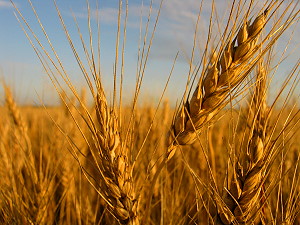 Northwest Region Crop Report Prepared by: Manitoba Agriculture
Northwest Region Crop Report Prepared by: Manitoba Agriculture
August 6, 2019 |
Northwest Region
There were good growing conditions in the Northwest region this past week and the crop is progressing well. Daytime temperatures hovered around 25°C and there were widespread rain showers along with heavy morning dews. Roblin area received the most rainfall last week at 50 mm. These showers as well as favourable weather conditions have helped crops to recover and somewhat compensate for the challenging spring conditions. Soil moisture conditions around Dauphin/Ste. Rose area continue to be short; soils in Swan River, The Pas and Roblin are 100% adequate.
There was good progress in crop growth in the region; most fields look clean with good weed control. The canola crop continues to advance and, with the exception of very late seeded or stressed fields, 100% of the crop is flowering. Spring cereals are heading out and starting to turn and are in the milk to soft dough stage. The field peas in the region are podding up and starting to mature. Soybeans are flowering around Roblin and Swan River and are in the R1 stage. Sixty percent of the flax crop is flowering with the earlier seeded fields in the boll stage. Silage corn around Roblin is in good to poor
condition.
Diamondback moth larvae are present in some fields. Of the almost 30 monitoring traps for Bertha Armyworm in the Northwest region, the highest cumulative counts are around Ste. Rose at 322 and Minitonas at 323. These numbers are in the “uncertain risk” range and reflect areas to prioritize when scouting for larvae. Fungicide applications are occurring as conditions and staging allows.
Showers have been more widespread throughout the Northwest; however haying has become delayed due to the moisture and will resume as forecasts look more stable with clearer weather. Hay yields are reporting to be very low at 30 to 50% of normal although newer fields are reporting somewhat higher yields at 50 to 60% of normal. Pastures are improving with the additional moisture, however water sources dugouts and creeks, continue to be low or very low on pastures.
Grasshoppers continue to be a major problem throughout the region on both pastures and hay fields. Small improvements are visible on annual crops that are intended for silage and greenfeed. Hayfield conditions are rated as 20% good, 40% fair, and 40% poor to very poor. Pasture conditions rated as 10% good, 40% fair, 20% poor and 30% very poor.
